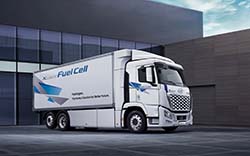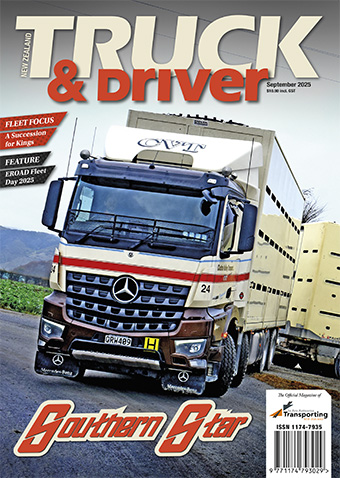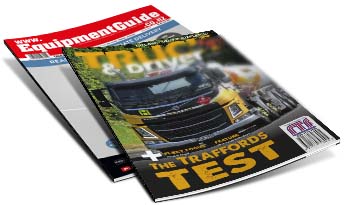Aeolus Truck & Driver News


Aeolus Truck & Driver News
There are 24 battery electric truck models and a single hydrogen fuel cell model from 10 manufacturers on the initial list of vehicles qualifying for support under the recently announced Low Emissions Heavy Vehicle Fund (LEHVF).
The $27.75m Energy Efficiency and Conservation Authority (EECA) administered fund, announced in late-September, is a Government initiative to boost New Zealand’s adoption of zero and low-emissions heavy vehicles.
Transport operators can apply for up to 25% funding support when purchasing new zero and low-emissions heavy vehicles.
Specifics of the scheme require vehicles to have a GVM of 5.9-tonnes or greater, and grants apply to the cost of the cab-chassis only, excluding bodywork.
...There are 24 battery electric truck models and a single hydrogen fuel cell model from 10 manufacturers on the initial list of vehicles qualifying for support under the recently announced Low Emissions Heavy Vehicle Fund (LEHVF).
The $27.75m Energy Efficiency and Conservation Authority (EECA) administered fund, announced in late-September, is a Government initiative to boost New Zealand’s adoption of zero and low-emissions heavy vehicles.
Transport operators can apply for up to 25% funding support when purchasing new zero and low-emissions heavy vehicles.
Specifics of the scheme require vehicles to have a GVM of 5.9-tonnes or greater, and grants apply to the cost of the cab-chassis only, excluding bodywork.
There is also 25% funding available to convert existing ICE vehicles to low or zero-emissions technologies. These vehicles must have been registered in New Zealand for the first time between 1 August 2022 and 1 August 2024, whether they have had a single owner or multiple owners.
“The LEHVF will offset upfront costs for businesses, enabling them to increase productivity with vehicles that are cheaper to operate,” says Energy Minister Simeon Brown.
“High upfront costs and the unknown total cost of ownership are the main barriers to the uptake of zero and low-emissions heavy vehicles.
“By offsetting up to a quarter of these vehicles’ purchase price, the Government is encouraging businesses to trial these new technologies to reduce day-to-day operating costs, ultimately saving money for consumers at the checkout.”
Climate Change Minister Simon Watts says the fund will provide emissions benefits for years to come.
“Transport accounts for 18% of New Zealand’s total emissions, which is why the Government wants to remove barriers and accelerate businesses to switch to lower-emission technologies,” says Minister Watts.
“EECA’s modelling estimates up to 500 diesel-only vehicles would likely be replaced by mostly zero-emissions vehicles by 2028, as well as some low-emissions hybrid vehicles as a result of the Low Emissions Heavy Vehicle Fund.
“While this is a one-time initiative, there will be cumulative emissions benefits over the lifecycle of these low-emissions heavy vehicles. Initial estimates indicate that switching 500 diesel-only vehicles to zero and low-emissions alternatives will prevent 366,622 tonnes of carbon dioxide equivalent emissions,” Mr Watts says.
While the announcement suggests the fund will help promote innovation and offset the cost of hundreds of heavy vehicles powered by clean technologies, there is little in the way of a firm timeline beyond the initial six-month funding period.
EECA says the LEHVF will be reviewed six months from its launch to ensure it is meeting its objectives and captures market advancements. Reviews will consider whether changes to the programme’s parameters are required, including grant caps.
An initial review is expected by February 2025 with a March 2025 briefing to the Ministers of Transport and Energy on the review’s outcome, as well as any advice on adjustments for the LEHVF’s second phase.
A public announcement on further plans is scheduled for April 2025, following Ministerial sign-off, and any changes to the LEHVF programme will take effect from July 1, 2025.
The funding programme has been welcomed by transport industry associations.
“The road freight sector is committed to decarbonisation, including adopting low and zero emission vehicles. However, the high purchase cost and limited range and freight capacity of many available models is a big barrier to uptake. In a low margin industry like ours, practical support from the Government is essential,” says Transporting New Zealand Interim CEO Dom Kalasih.
“Battery electric trucks cost between 2-3 times more than internal combustion equivalents, with limited range and loads. Freight customers are understandably price sensitive, particularly in the current economic climate, and this can make low and zero emission freight services a tough sell.”
Transporting New Zealand is also calling for the Government to prioritise three actions to support decarbonisation in the road freight sector.
It supports introducing accelerated depreciation for low and zero emission vehicles (including higher productivity motor vehicles) and reforming the vehicle dimension and mass rules to allow more battery weight on front axles.
It also recommends strengthening roads surfaces and bridges to allow heavier, more efficient, electric vehicles and high productivity motor vehicles to access more of the roading network.
“Co-funding vehicle purchases is an important piece of the puzzle, but getting our regulatory settings and roading network ready for more efficient vehicles is also essential to increasing uptake and driving down emissions,” says Kalasih.
National Road Carriers Association (NRC) GM Policy & Advocacy James Smith says the LEHVF will help the road transport industry’s transition to clean technologies.
Smith says moving to a low emissions model is challenging for the freight sector for various reasons including infrastructure limitations with charging stations or hydrogen refuelling, high initial costs of electric or hydrogen vehicles, the technology still developing compared with diesel, and the sunk cost and long lifespan of current vehicles.
Further specifics of the LEHVF will cap grants at $4 million per vehicle importer/supplier and $1 million per vehicle operator, for the first year of the LEHVF’s operation. Caps for the following year will be set by March 31, 2025 and announced by the end of April 2025.
There are also capped maximums on funding for each vehicle category, depending on gross vehicle mass (GVM) and vehicle class.
Public transport buses are excluded from the LEHVF, but other buses and coaches meeting weight requirements are eligible.



 + EQUIPMENT GUIDE - FREE
+ EQUIPMENT GUIDE - FREE
